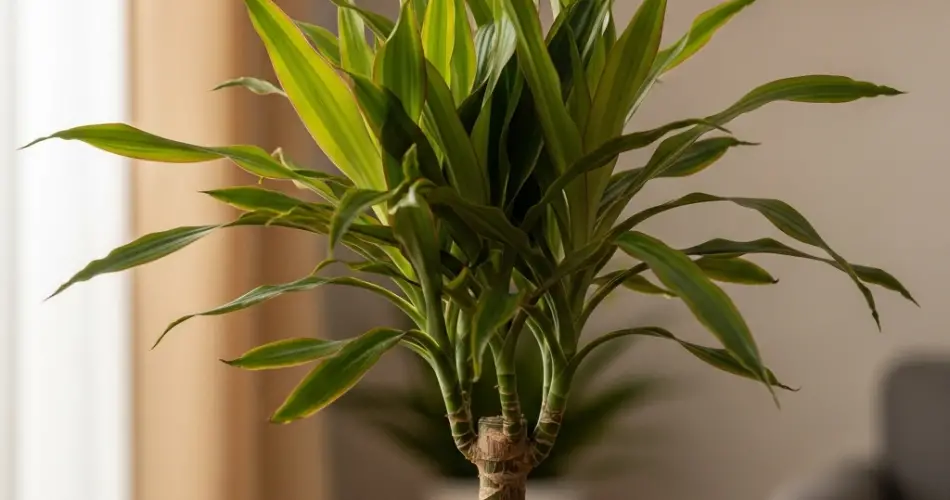Dracaena plants are among the most popular indoor houseplants, appreciated for their striking foliage, upright stems, and ease of care. With varieties like Dracaena marginata, Dracaena fragrans, and Dracaena reflexa, these plants bring a touch of tropical elegance to homes and offices. While they are low-maintenance, improper watering is one of the most common reasons for leaf yellowing, browning tips, and slow growth. Whether you’re new to plant care or have a busy schedule, understanding Dracaena’s watering needs is essential for keeping your plant healthy and thriving.
Understanding Dracaena’s Watering Requirements
Dracaena plants have shallow roots that require consistent moisture but are highly sensitive to overwatering. Both excessive and insufficient watering can lead to stress, making proper technique key. Key points to remember include:
-
Moist but not soggy: Soil should remain evenly moist, avoiding waterlogged conditions that can cause root rot.
-
Sensitive roots: Overwatering can suffocate roots, while underwatering may lead to leaf droop and dry tips.
-
Environmental impact: Light, temperature, and humidity affect how quickly soil dries, requiring adjustments to your routine.
By recognizing these factors, you can provide the right level of hydration without stressing the plant.
Choosing the Right Soil and Pot
Soil and container selection significantly influence watering success:
-
Well-draining soil: A mix of potting soil, perlite, and peat moss provides moisture retention while allowing excess water to drain.
-
Pot with drainage holes: Always use pots that allow water to escape. Standing water at the base can lead to root rot.
-
Pot size: Oversized pots may retain too much moisture, while small pots dry out quickly. Choose a size that balances water retention with growth needs.
Healthy roots supported by proper soil and drainage form the foundation for strong, vibrant growth.
Practical Watering Techniques
Check Soil Moisture First
Before watering, test the soil by inserting your finger 1–2 inches deep. Only water when this layer feels dry. This simple check prevents overwatering and ensures your Dracaena receives moisture when it needs it.
Top Watering
-
Pour water evenly at the base of the plant.
-
Avoid wetting the crown or leaves to prevent fungal issues.
-
Allow excess water to drain completely through the pot’s drainage holes.
Bottom Watering
-
Place the pot in a shallow tray of water for 20–30 minutes.
-
Allow soil to absorb water from the bottom.
-
Remove once the soil is sufficiently damp.
Water Temperature
Use room-temperature or lukewarm water. Cold water can shock the roots, slowing growth or causing leaf stress.
Watering Frequency
Dracaena’s water needs vary with the seasons:
-
Spring and Summer: Water approximately once a week, when the top inch of soil is dry. Warm temperatures and active growth increase moisture demand.
-
Fall and Winter: Water less frequently, about every 10–14 days, as slower growth and cooler indoor conditions reduce soil drying.
-
Adjust for environment: Small pots or dry indoor air may require more frequent watering, while larger pots or higher humidity reduce the need.
Consistency in checking soil moisture is more effective than following a rigid schedule, especially for busy gardeners.
Tips for Busy Plant Owners
-
Self-watering pots: These containers help regulate moisture and reduce the risk of over- or underwatering.
-
Set reminders: Mark a calendar or phone reminder to check soil once or twice a week.
-
Use a moisture meter: A simple device can help you determine when your Dracaena truly needs water.
-
Group plants: Placing multiple plants together can create a microenvironment with higher humidity, reducing watering frequency.
These strategies save time while maintaining plant health.
Signs of Watering Problems
-
Yellowing leaves: Often a sign of overwatering.
-
Brown leaf tips: Can result from underwatering or low humidity.
-
Leaf drop: Usually caused by inconsistent watering or root stress.
Identifying these symptoms early allows you to adjust your care routine and prevent long-term damage.
Conclusion
Proper watering is essential for healthy Dracaena plants, whether you are a beginner or a busy gardener. By using well-draining soil, choosing the right pot, monitoring soil moisture, and adjusting watering based on seasonal needs, you can keep your plant thriving. Practical techniques such as top or bottom watering, paired with simple reminders and tools for busy schedules, make maintaining your Dracaena easy and effective.
With attentive watering, appropriate soil and pot selection, and consistent care, your Dracaena will reward you with lush foliage, upright stems, and vibrant leaves that enhance any indoor space throughout the year.



